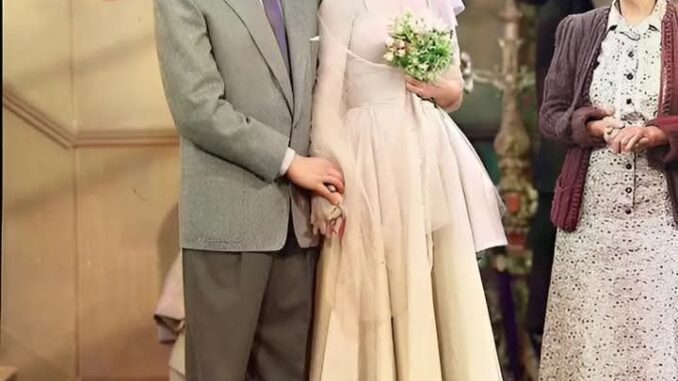
In the vast legacy of I Love Lucy, few episodes are as iconic or as masterfully comedic as “Lucy and Harpo Marx.” Airing in Season 4, this episode was more than just a meeting between two legends — Lucille Ball and silent film comedian Harpo Marx — it was a living showcase of perfect comedic timing, physical artistry, and creative genius that transcended its era.
The episode begins with Lucy Ricardo (Lucille Ball) pretending to know Hollywood stars in an effort to impress her friends. When Harpo Marx unexpectedly shows up, Lucy is forced to continue her elaborate lie — leading to one of television’s most unforgettable moments: the “mirror scene.” In it, Lucy mimics Harpo’s every move and expression as if standing before a mirror, creating one of the greatest comedy sequences ever filmed.
What makes “Lucy and Harpo” timeless is the fusion of two comedy worlds. Harpo embodied the golden age of silent film — where laughter was born purely from movement and expression. Lucy, on the other hand, represented the modern sitcom — where humor came from dialogue, circumstance, and character. When these two styles met, the result was a “comedy ballet” that felt both classic and astonishingly fresh.
Lucille Ball once described Harpo Marx as “the silent teacher” who inspired her to master physical comedy. In this episode, viewers witness her in full command of her craft — from subtle facial gestures to exaggerated body movements — all orchestrated into a symphony of laughter without a single spoken line.
Director William Asher approached the episode as if staging a live theater performance. Rather than relying on dialogue, he used wide shots and precise cuts to let the audience experience every movement between the two comedians. The pacing builds steadily — from small gestures to perfect synchronization — until it becomes impossible to look away.
“Lucy and Harpo” also captures what made I Love Lucy so revolutionary: the balance between spontaneity and structure. What seems like a simple gag is, in fact, a carefully choreographed sequence of comedic beats — from Lucy’s signature eye rolls to Harpo’s honking horn. This wasn’t just acting; it was a “dance of laughter.”
Culturally, the episode represents one of the rare moments in American television where two eras of comedy — silent film and modern TV — met on equal footing. Critics often refer to it as a symbolic “passing of the torch” between generations. It proved that comedy, no matter how much it evolves, can always transcend language, technology, and time to deliver pure joy.
Today, “Lucy and Harpo” continues to be shown in film and comedy studies classrooms — not just to honor the legends but to remind audiences that the truest laughter comes from shared humanity.
Nearly 70 years later, the “mirror scene” remains as funny and fresh as ever. It stands as a testament to the enduring power of creativity — when a daring woman like Lucy Ricardo could go toe-to-toe with a silent legend like Harpo Marx, and together, they made television history.
